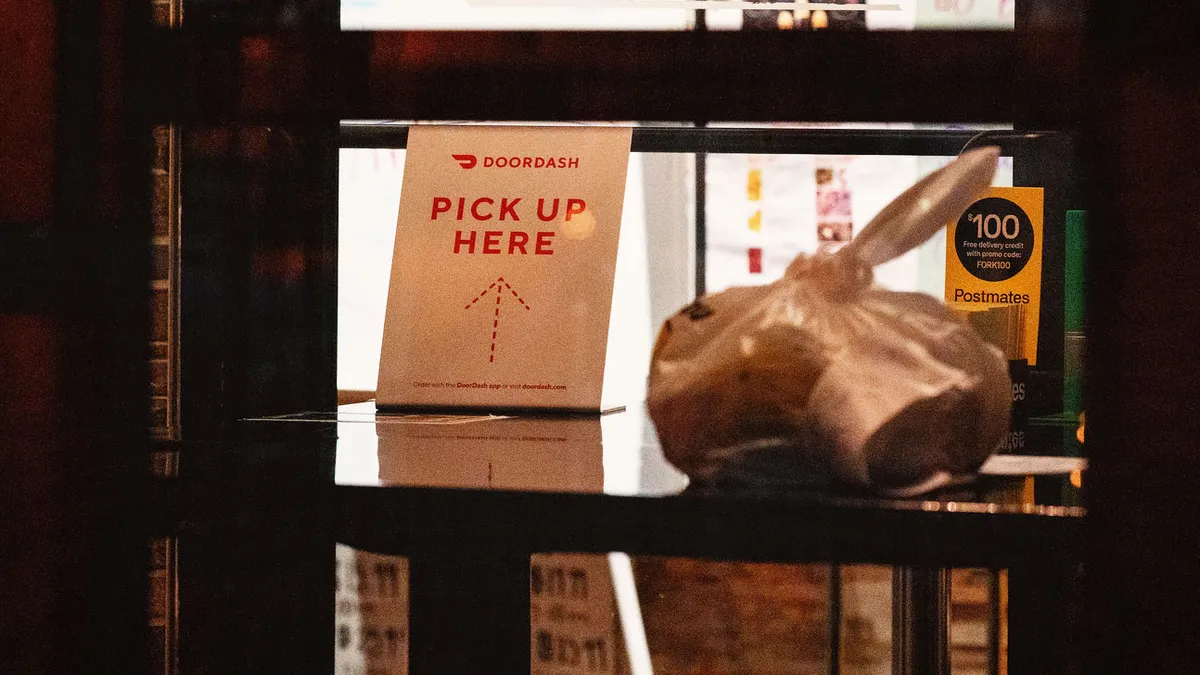Dive Brief:
- Diners have increasingly ordered takeout rather than delivery in the wake of the novel coronavirus pandemic, according to Upserve sales data shared with Restaurant Dive via email.
- Delivery accounted for 32% of Upserve Online Ordering sales in February, but as of April 20, delivery only made up 14% of transactions.
- "This may be due to restaurants that pivoted quickly to online ordering without lining up delivery partners," Upserve said in the email. "It may also suggest that restaurants partnering with [third-party] delivery companies are processing more delivery orders through the [third-party], and takeout orders through [Upserve Online Ordering]."
Dive Insight:
This growing interest in takeout over delivery makes sense for a few reasons.
For restaurants that traditionally rely on in-house sales, the shift to delivery is far more burdensome than simply offering takeout options. Orchestrating the logistics of an online platform, delivery drivers, delivery fees and ensuring that food quality remains strong on the drive to its final destination are all factors that take time to perfect. This has created a major opportunity for the third-party delivery services like Uber Eats, Grubhub and DoorDash to step in with turnkey solutions. Grubhub added over four times as many restaurants to its app during a single day in March than it had on its previous record day, for example.
But some diners aren’t keen to fork over a sizeable delivery fee just to have their meal brought to their doorstep. Orders placed through a delivery app often rack up a set of fees, which in some cases include the fee that the service charges the restaurant. A $39 Family Feast value meal at Panda Express would yield a 49% higher tab if ordered through Uber Eats compared to being purchased in the restaurant, according to The New York Times. It concluded that markups on food purchased through a delivery service range from 7% to 91%. A 2019 study found that 83% of consumers are willing to pay $5 in delivery fees at best. As consumers deal with furloughs, layoffs and other financial pressures, discretionary spending coffers are running dry and creating more impetus for them to be their own delivery drivers.
With rising awareness about the dire situation that the restaurant industry faces, many outlets have called for consumers to order directly from a restaurant to help brands avoid the costly third-party delivery fees. In response, many delivery companies have launched COVID-19 support measures like waiving fees. Grubhub is pausing the collection of marketing fees for independent restaurants who agree to work with it for one year, while Postmates is offering an emergency waiver on fees usually charged to new restaurants.
Another point in takeout’s column is the tendency for delivery to slowly whittle away at the food’s quality, leaving it cold, soggy or disheveled in its container. Although consumers still have to transport their food after picking it up, they also have control over their food during this process, which may bring peace of mind amid coronavirus concerns.










